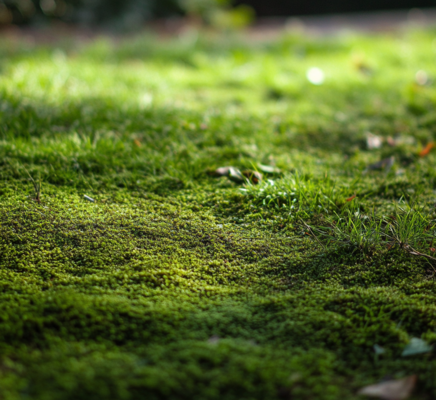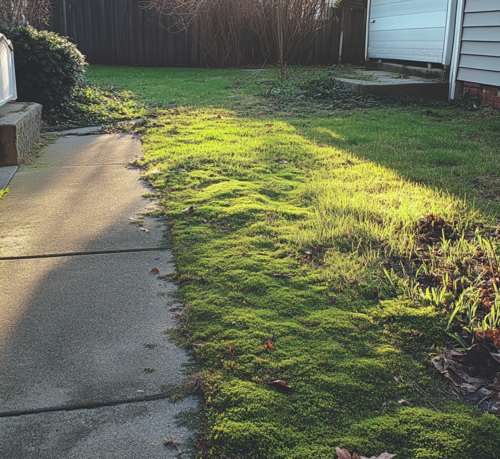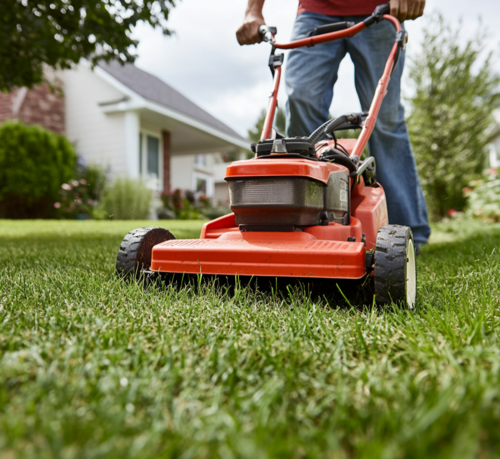Why is There Moss in Your Lawn and How Do You Get Rid of It?

Introduction
Moss creeping into your lawn can be frustrating, especially if you're aiming for lush, green, and healthy turf. While moss itself isn’t necessarily harmful, its presence often signals underlying issues with your soil or lawn care routine. If left unaddressed, moss can take over and weaken your grass, leading to a patchy, uneven lawn.
In this guide, we’ll explore why moss grows in your lawn, the conditions that promote its spread, and the best ways to remove and prevent it—with practical, sustainable solutions suited for San Francisco Bay Area lawns.
Why Does Moss Grow in Your Lawn?

Moss-covered Tree Roots
Moss thrives in environments where grass struggles to grow. If moss is taking over, it’s usually a sign of one or more of the following issues:
1. Excessive Shade
Grass needs ample sunlight to thrive. If your lawn is shaded by large trees, shrubs, or buildings, moss can easily take hold in the areas where grass is struggling to survive.
Solution: Trim overhanging branches to allow more sunlight to reach the lawn. Consider shade-tolerant grass varieties if you have a particularly shady yard.
2. Compacted Soil
Compacted soil prevents grass roots from accessing water, air, and nutrients, making it difficult for healthy turf to establish itself. Moss, on the other hand, can thrive in these conditions.
Solution: Aerate your lawn annually, preferably in the fall or spring, to improve drainage and promote healthier grass growth.
3. Poor Drainage and Excess Moisture
Moss loves damp conditions. If your lawn holds excess moisture due to poor drainage or overwatering, moss will quickly take advantage of the situation.
Solution: Improve drainage by aerating the soil, adjusting irrigation practices, and, if necessary, installing French drains or other drainage solutions.
4. Low Soil pH (Acidic Soil)
Moss thrives in acidic soil where grass struggles to grow. If your soil is too acidic, your grass won’t be able to absorb nutrients effectively, giving moss an advantage.
Solution: Perform a soil test to determine your lawn’s pH. If the soil is too acidic (below 6.0), apply lime to balance it out and create a more favorable environment for grass.
5. Nutrient Deficiency
Lack of essential nutrients weakens your grass, making it more susceptible to moss growth.
Solution: Apply a balanced fertilizer suited for your grass type and regional climate. In the Bay Area, consider using a slow-release organic fertilizer to maintain healthy turf.
6. Improper Lawn Care Practices
If you're mowing too low, watering too frequently, or neglecting lawn maintenance, you may be creating the perfect conditions for moss to thrive.
Solution:
- Mow at the right height: Set your mower blades to 3-4 inches to encourage deep root growth and prevent moss from taking over.
- Water deeply but infrequently: Instead of daily light watering, water your lawn 1-2 times per week, ensuring it receives about 1 inch of water per session.
- Overseed bare patches: Keeping your lawn thick and healthy reduces the chance of moss filling in weak spots.
How to Get Rid of Moss in Your Lawn

Moss Spreading Over a Backyard Lawn and Walkway
If moss has already taken hold, you’ll need to remove it and correct the underlying problems to prevent it from returning. Here’s how:
1. Physically Remove the Moss
The simplest way to get rid of moss is to rake it out using a dethatching rake or a steel garden rake. This method is effective for small infestations but won’t prevent moss from returning unless the underlying conditions are fixed.
2. Apply a Moss Killer
There are commercial moss-killing products available, typically containing iron sulfate or ammonium sulfate. These products help dry out and kill moss quickly.
Natural Alternative: If you prefer a non-toxic approach, mix a solution of water and dish soap (2 ounces of soap per gallon of water) and spray it directly on the moss. Within 24 hours, it will dry out, making it easier to remove.
3. Improve Lawn Drainage
If poor drainage is causing excess moisture, consider aerating the soil, leveling out uneven areas, or adding organic material to improve absorption.
4. Adjust Soil pH
If a soil test confirms acidic conditions, apply lime to raise the pH. The correct balance will help grass outcompete moss.
5. Fertilize and Reseed Bare Patches
Once moss is removed, overseed the area with high-quality grass seed suited to your region. A healthy, dense lawn is the best defense against moss.
Preventing Moss from Returning

A Homeowner Using a Push Mower for Regular Lawn Maintenance
To keep moss from taking over again, maintain a proper lawn care routine:
- Perform annual soil tests: Ensure optimal pH and nutrient levels.
- Aerate compacted soil: Do this at least once a year, preferably in the fall.
- Mow correctly: Avoid cutting your grass too short.
- Water wisely: Deep watering 1-2 times per week is better than daily shallow watering.
- Address shade issues: If possible, trim trees and bushes to allow more sunlight onto your lawn.
Final Thoughts
Moss in your lawn is often a symptom of deeper issues, such as poor drainage, compacted soil, or improper lawn care. Simply removing the moss won’t solve the problem long-term—you need to correct the conditions that allow moss to thrive.
By following these steps, you can eliminate moss and create a healthier, more resilient lawn that enhances your outdoor space.
For Bay Area homeowners, a well-maintained lawn is not only aesthetically pleasing but also plays a role in sustainability by reducing erosion and improving soil health. Start with a soil test, make the necessary adjustments, and enjoy a lush, moss-free lawn year-round!
Originally published on November 1, 2018.





